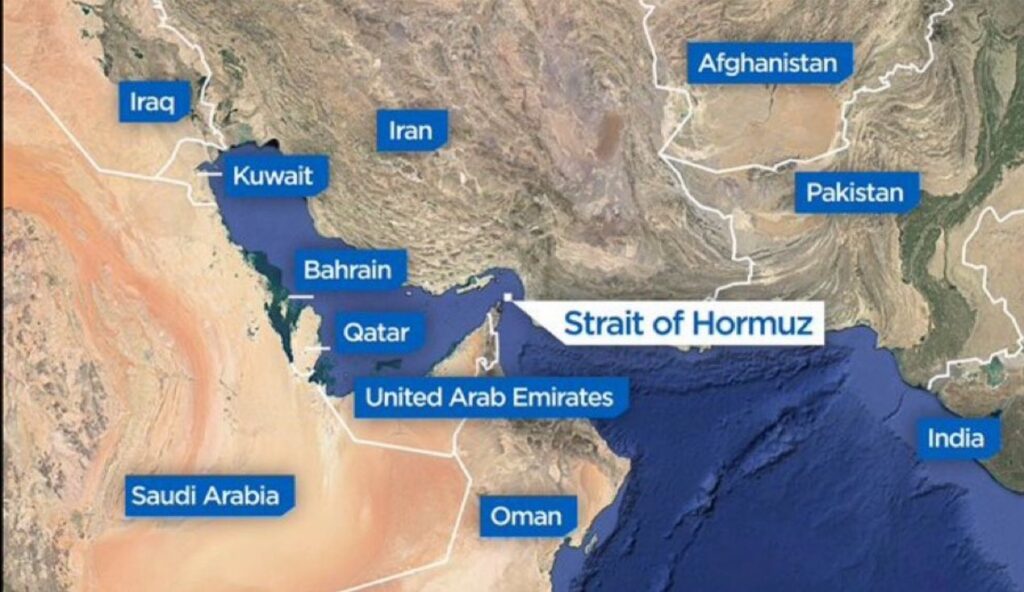Iranian Lawmakers Vote to Block World’s Most Strategic Oil Transit Route Following Military Escalation
The global energy landscape faces unprecedented uncertainty as Iran’s parliament has approved the potential closure of the Strait of Hormuz, the world’s most critical oil transit chokepoint, in response to reported US military strikes on Iranian nuclear facilities. This dramatic escalation threatens to disrupt approximately 20% of the world’s oil and gas supply, sending shockwaves through international markets and raising concerns about a global energy crisis.
BIG BREAKING NEWS 🚨 Iran's parliament approves closure of Strait of Hormuz after US strikes 😱
— Times Algebra (@TimesAlgebraIND) June 22, 2025
It is one of the world’s most critical energy chokepoints.
Crude Oil Price is expected to rise globally 😳
Around 20% of the World's oil and gas supply — including shipments from… pic.twitter.com/Xg5hOLeCCe
The narrow waterway, measuring just 21 miles at its narrowest point, serves as the primary passage for oil shipments from major energy producers including Saudi Arabia, Iraq, the United Arab Emirates, Qatar, and Iran. Any disruption to this vital maritime corridor could trigger immediate spikes in crude oil prices worldwide, potentially affecting everything from gasoline costs to heating bills for consumers across the globe.
Iran’s parliamentary decision represents a significant escalation in the ongoing regional conflict, though the final authority to implement the closure rests with the country’s Supreme National Security Council. This procedural requirement means that while lawmakers have endorsed the measure, the actual blocking of the strait requires approval from Iran’s highest security decision-making body, leaving room for diplomatic intervention.
Economic Implications of Strait of Hormuz Closure on Global Energy Markets
The potential closure of the Strait of Hormuz carries catastrophic implications for the global economy, extending far beyond immediate oil price increases. Energy analysts predict that blocking this strategic waterway could lead to oil prices surging by 50-100% within days, creating ripple effects throughout the world economy that could trigger recession in energy-dependent nations.
The strait’s closure would immediately eliminate approximately 21 million barrels of oil per day from global markets, representing roughly one-fifth of worldwide petroleum consumption. This sudden supply shock would force countries to tap into strategic petroleum reserves while scrambling to secure alternative energy sources through more expensive and time-consuming routes.
Major oil importers, particularly in Asia and Europe, would face severe supply chain disruptions. Countries like Japan, South Korea, and India, which rely heavily on Middle Eastern oil imports through the strait, would need to quickly pivot to alternative suppliers or shipping routes around the Cape of Good Hope, adding weeks to transit times and substantially increasing costs. The financial markets have already begun reacting to the news, with oil futures contracts showing significant volatility. Energy companies’ stock prices are experiencing dramatic swings as investors attempt to price in the potential impact of a prolonged strait closure. Beyond energy markets, transportation, manufacturing, and consumer goods sectors are bracing for increased operational costs that could ultimately be passed on to consumers.
Geopolitical Consequences and International Response to Iran’s Strategic Move
Iran’s parliamentary approval for closing the Strait of Hormuz represents more than an economic weapon; it constitutes a fundamental shift in regional power dynamics that could reshape Middle Eastern geopolitics for years to come. The move signals Iran’s willingness to weaponize global energy security in response to what it perceives as existential threats to its nuclear program and national sovereignty.
International maritime law experts note that closing the strait would violate the United Nations Convention on the Law of the Sea, which guarantees freedom of navigation through international waterways. This legal framework provides justification for potential military intervention by coalition forces to ensure the waterway remains open, raising the specter of direct military confrontation between Iran and international naval forces.
The United States maintains a significant naval presence in the Persian Gulf through its Fifth Fleet, headquartered in Bahrain, specifically to protect freedom of navigation through the strait. European nations and Asian allies have indicated they would support efforts to keep the waterway open, potentially leading to an international coalition response similar to those seen during previous Gulf conflicts.
Regional powers are closely monitoring the situation, with Saudi Arabia and the UAE having contingency plans to increase oil shipments through alternative routes, including pipelines and Red Sea ports. However, these alternatives cannot fully compensate for the volume of oil that typically transits through Hormuz, making diplomatic resolution critical to preventing a global energy crisis. The international community now faces the delicate challenge of de-escalating tensions while maintaining pressure on Iran to reconsider its position. With Iran’s Supreme National Security Council still to make the final decision, diplomatic channels remain open for negotiated solutions that could prevent this economic catastrophe while addressing underlying security concerns.





















